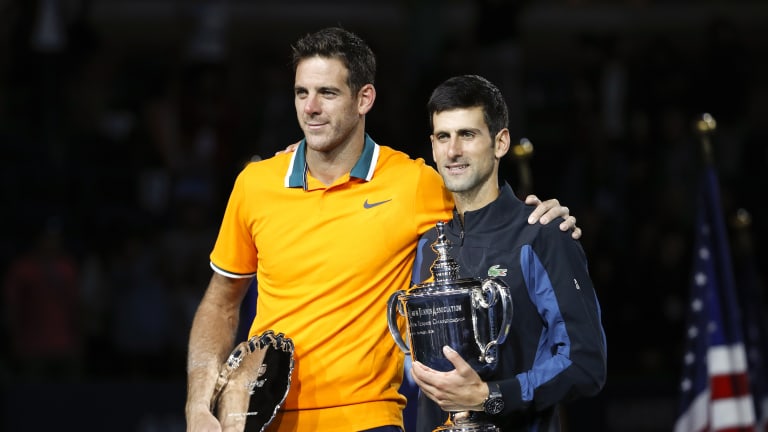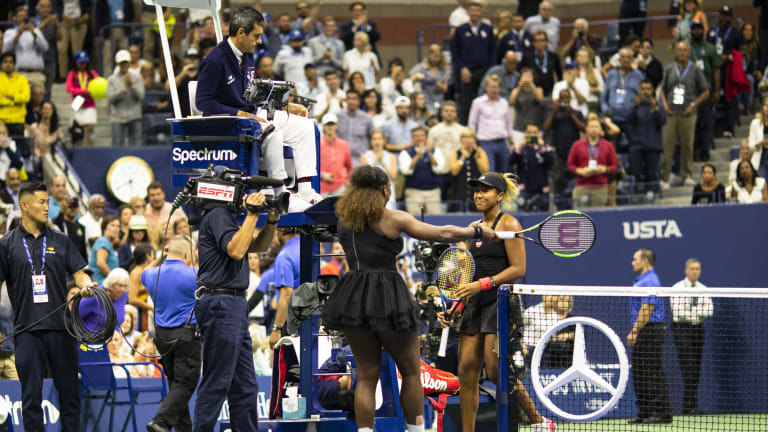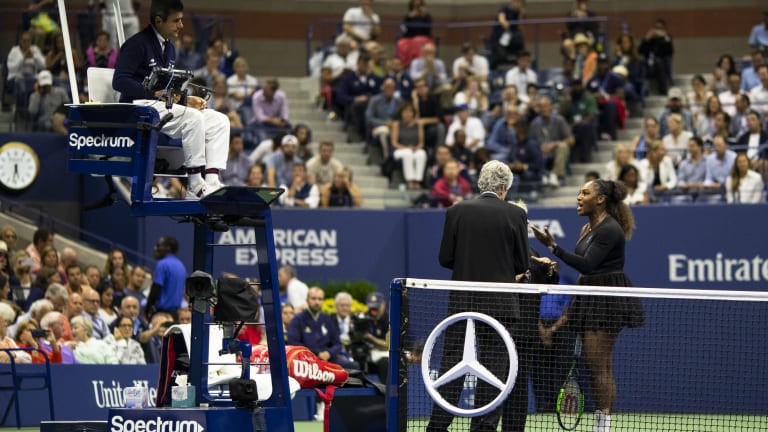Wrapping up the women's final between Serena Williams and Naomi Osaka:
US Open finals tell vastly different tales of comfort and chaos
By Sep 10, 2018ATP Munich, Germany
Ben Shelton: European football's newest superfan? Lefty making most of Munich debut
By Apr 15, 2025ATP Barcelona, Spain
Casper Ruud, Stefanos Tsitsipas open Barcelona bids in quest to halt further ranking slides
By Apr 15, 2025Tennis.com Interview
Jan-Lennard Struff sees Munich title defense bid as 'perfect opportunity' to turn 2025 around
By Apr 14, 2025Stat of the Day
Andrey Rublev storms to 100th ATP 500 win of career with opening victory in Barcelona
By Apr 14, 2025ATP Monte Carlo, Monaco
Monte Carlo takeaways: Alcaraz wins by playing for himself, one-handed backhands hold firm
By Apr 14, 2025Lifestyle
Alexandra Eala: The reality of travel and difficulty of securing visas with a Philippine passport
By Apr 14, 2025Week In Preview
Aryna Sabalenka takes her first crack at Iga Swiatek's clay-court supremacy in Stuttgart
By Apr 14, 2025ATP Challenger Tour
ATP Challenger Tour: History made for Felipe Meligeni Alves
By Apr 14, 2025The Business of Tennis
Carlos Alcaraz surpasses 40 million dollars in career prize money after winning Monte Carlo
By Apr 14, 2025US Open finals tell vastly different tales of comfort and chaos
Published Sep 10, 2018
Advertising
Advertising

US Open finals tell vastly different tales of comfort and chaos
© Copyright 2018 The Associated Press. All rights reserved
Advertising

US Open finals tell vastly different tales of comfort and chaos
© Anita T Aguilar
Advertising

US Open finals tell vastly different tales of comfort and chaos
© Anita T Aguilar
Advertising

US Open finals tell vastly different tales of comfort and chaos
© Anita T Aguilar